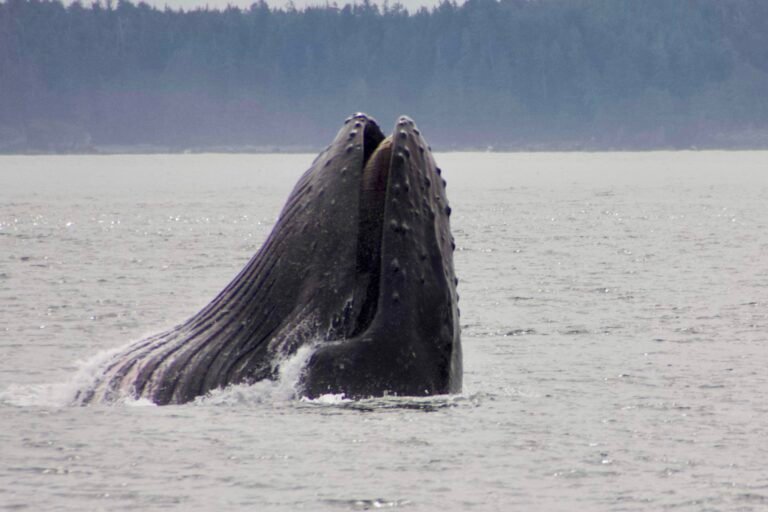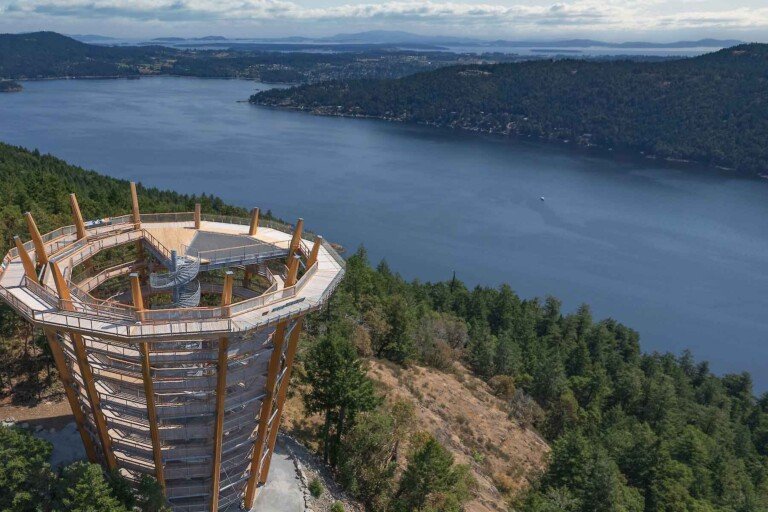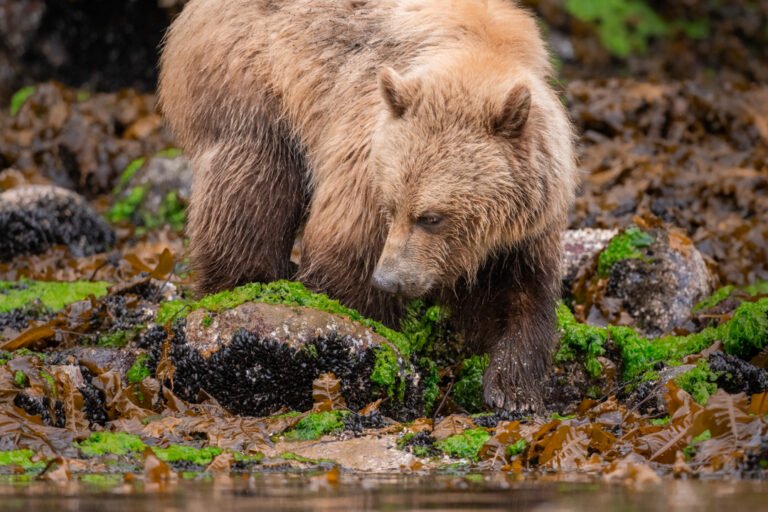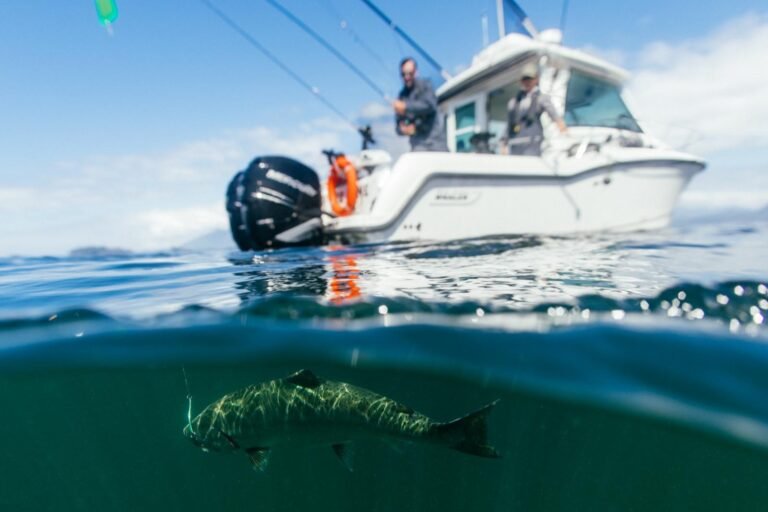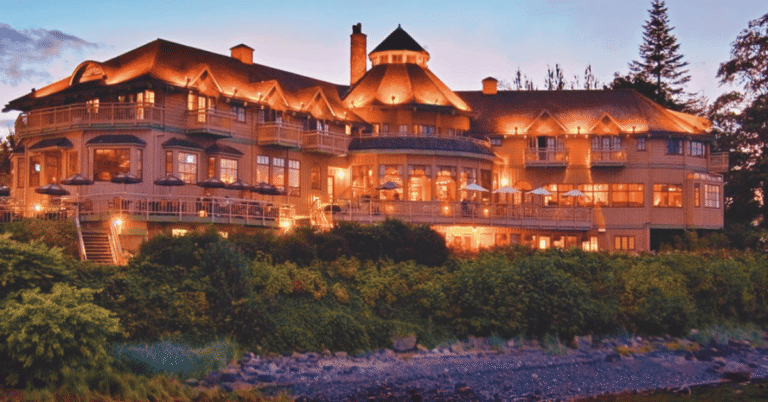Premier Listings: Hiking & Backpacking: Vancouver, Coast & Mtns
There’s plenty of action afoot around Vancouver and neighbouring areas, especially in city parks and beaches. You can ‘walk till you drop’ along the Stanley Park Seawall and along the 33-mile (53-km) trail network in Pacific Spirit Regional Park, 12 miles (18 km) of which are set aside exclusively for those on foot. Vancouver’s Queen Elizabeth Park and New Westminster’s Queen’s Park feature particularly eye-pleasing pathways bordered on all sides by intensely planted gardens. At certain times of the year the colours and perfumes are almost overwhelming.
Vancouver and Burnaby both have trails that run beside the Fraser River. Vancouver’s Fraser River Park is located at the south end of Angus Drive and 75th Avenue. Take 72nd Avenue west of Granville Street and watch for the large wooden sign that will direct you to the park. There’s always plenty of activity on land, sea, and air to watch as you stroll the shoreline trail here (easy; 1 mile/0.6 km return). One of the most interesting features of the park has been the ongoing restoration of intertidal marshland. Interpretive signs explain the function of a system of weirs that regulate the flow of water through the park. Boardwalks and bridges lead beside the river and make walking a delightful pastime even in wet weather.
There are also river trails in Vancouver’s Riverfront Park and Gladstone-Elliot Park, as well as the paths in Everett Crowley Park just uphill from Riverfront. To find them, head along SE Marine Drive to Kerr Street, then south to Kent Avenue. Park here and begin exploring Riverfront Park with its broad pier, twin walking/cycling/in-line skating trails (easy; about 4 miles/6 km return), a beach, and a children’s play area. Walk west along this stretch of waterfront that eventually reaches Gladstone-Elliot Park, which has its own pier, perfect for river viewing.
One good stretch with a forested feeling is the Burnaby River Trail (easy; about 6 miles/10 km return). This hard-packed, cedar-lined dirt pathway runs east beside the river from the south foot of Boundary Road near Marine Way towards New Westminster. Parking is available beside the trailhead on Boundary Road. An alternate approach to the trail is at Fraser River Park, located at the south end of Byrne Road off Marine Way. Here in the park, the log booms that line the shoreline beside much of the trail give way to a long stretch of open beach. One of the most attractive sights along the trail is Mount Baker’s snow cone, framed by the spires and guy wires of two bridges, the Queensboro and the Pattullo.
The Sasamat Lake Loop Trail (easy; 1.5 miles/2.5 km return) circles Sasamat Lake in Belcarra Regional Park. Follow it around from White Pine Beach as it leads south to a floating boardwalk that crosses the lake. Two small docks for fishing and swimming are located along the walkway. The road that leads to the heart of Belcarra Park begins just before Sasamat Lake. Follow the signs to reach the main parking area. Detailed maps of Belcarra Regional Park are available year-round from the park’s concession stand nearby. (Note: There is no public parking in the village of Belcarra, so it is imperative to follow the road that leads to the park’s main parking area.) Belcarra has a tradition of being a summer picnic destination. Boats once brought day trippers from Vancouver’s Coal Harbour to Belcarra for the day. Belcarra’s picnic area has reservable picnic shelters and even a reservable wharf.
Admiralty Point Trail (easy; 3 miles/5 km return) begins from the main parking lot and heads south through second-growth forest and over a naturally cobblestoned trail to several good viewpoints. A 30-minute walk will have you at Admiralty Point and the Maple Beach picnic area. Even on cloudy days you’ll find the open shoreline on Burrard Inlet is bright. Rocky outcroppings occur at points like Cod Rock, a perfect place to sit and watch the tide. Besides the view of Barnet and Mount Burnaby, you can also see Cates Park and Deep Cove to the west, and Mount Seymour rising above the entrance to Indian Arm, a fjord that stretches 11 miles (18 km) north.
Cod Rock Trail (moderate; 4 miles/7 km return) leads inland through tall second-growth forest from Cod Rock to Sasamat Lake and links with the Sasamat Lake Loop Trail. Yet another pathway, the Jug Island Trail (moderate; 3 miles/5 km return), begins beside the covered picnic shelter in the heart of the park. Much of the way along the trail is either up or downhill, with a series of wooden staircases for assistance in the steepest sections. Although there are few views along the way, there is a branch of the trail that leads out to an opening beside Bedwell Bay. From here you look east to the slopes of Eagle Ridge and the broad flank of Coquitlam Mountain. Depending on your pace it will take you between 30 and 45 minutes to reach pleasant cobble-and-sand Jug Island Beach from the Belcarra picnic grounds. (Jug Island actually lies offshore at the north end of a narrow peninsula.)
Between dips in the ocean at Crescent Beach, search out viewpoints south of the sandy beach area. (If you are not planning to visit the beach, leave your car at a small parking area at the intersection of Bayview and McBride just south of Beecher next to the Burlington Northern Railway tracks.) Pick your way along the rocky shoreline and head south towards distant Kwomais Point, around which the railway tracks curve east past Semiahmoo Bay and White Rock Beach. Gravel and riprap make walking more difficult at water’s edge than beside the tracks. (A warning notice posted near the parking area informs track walkers that they do so at their own risk.)
Kayakers pass by offshore, balanced on the waters of the bay with much greater ease than those poised above on the steel rails. The tracks hug the hillside, curving gracefully along the embankment. Looking south from one of the curves, you can just make out the sandstone bluffs that rise above Birch Bay in Washington State. Along the way, various rough trails lead down the steep embankment, none of which are very inviting to explore. The charm here lies in the quiet isolation of the beach as the less adventuresome throngs are left behind.
Watch for the ‘1,001 Stairs‘ that lead from the beach to the neighbourhood situated above that is all but unseen from below. The clue to finding them is the appearance of a very small trestle bridge. A trail runs from the beach beneath the bridge and then leads south along the embankment behind a mesh metal fence. In minutes you’ll come upon a wooden staircase that climbs the hillside. Numerous landings interrupt the flow of stairs, places where you can pause to catch your breath while taking in the views of Tsawwassen and Point Roberts on the peninsula to the west across Boundary Bay.
Deas Island Regional Park in Delta is interlaced with over 3 miles (5 km) of forested walking trails that run beside the Fraser River on the north side and Deas Slough on the south. Walk across the island to a small beach near the west end where the Fraser laps at the shoreline as large, oceangoing freighters glide past. The overwhelming girth of these vessels dwarfs those of the small fishing boats that also ply the Fraser. Eagles perch in the branches of the tall black cottonwood trees that overhang the trails. There’s even a 2-storey observation tower from which you can look out over the island at treetop level. Nearby is a lovingly restored heritage home, a schoolhouse, and an agricultural hall.
Expect to find extended walking on any of the estuary dike trails listed in the Cycling section, including Brunswick Point and the Boundary Bay Regional Trail in Delta (Boundary Bay Regional Park), and all the dike trails in Iona Beach Regional Park in Richmond.
Golden Ears Provincial Park offers more walking and hiking close to Vancouver than any other single destination. Over a dozen trails lead to various destinations throughout the park, including a lengthy 8-mile (12-km) one-way journey to the Golden Ears themselves.
Adjacent to park headquarters, tiny Mike Lake is the starting point for the Alouette Mountain Hiking Trail (12 miles/20 km return) trek to the summit of Alouette Mountain. Although there aren’t many open views along the way, once on top you have a panoramic perspective south across the Fraser Valley into Washington and west across the Strait of Georgia to Vancouver Island. Shorter excursions in Golden Ears Provincial Park include the 2.6-mile (4.2-km) Mike Lake Trail. Search the understorey for signs of old logging equipment and wildflowers such as the delicate pink azalea, with petals shaped like five-pointed stars. By the beginning of summer, clusters of bright red elderberries hang from the branches that droop overhead. A month later, devil’s club, a relative of ginseng, with broad maple-shaped leaves, puts forth red berries from the ends of its pointed – and very prickly – stems.
In addition, two more walking trails begin from the park’s Alouette Lake day-use area. The Lookout Trail and Loop Trail each take walkers on a 1.5-mile (2.5-km) round trip from lakeside to an elevated viewpoint. Allow an easy hour to complete the loop, just time enough to dry off between swims. The Spirea Nature Trail is a short walk that winds through the woods adjacent to the park’s main road and introduces visitors to the fascinating variety of flora in the forest understorey. The trail begins from the parkway near the entrance to Alouette Lake.
Two trails begin from the Gold Creek day-use area parking lot, located at the north end of the park’s main road. Both lead to a set of waterfalls on Gold Creek. The Lower Falls Trail (easy; 3.5 miles/5.5 km return) is one of the most popular walks in Golden Ears Provincial Park. The East Canyon Trail (moderate; 17 miles/28 km return) is much rougher. One of the benefits of taking either route to the falls is the views of the Golden Ears and other peaks in this group that stand revealed on the skyline above Gold Creek.
Lower Falls Trail is a gentle, cedar-bark trail that winds through a mixed forest of mature vine maple and conifers. This is an especially pretty walk in autumn, when pancake-size bigleaf-maple foliage blazes red and reflects in the golden waters of the aptly named creek.
East Canyon Trail runs along the east side of Gold Creek and leads to the upper falls and far beyond. At first the trail follows a service road from the Gold Creek parking lot, past a metal gate, then left where it divides. (If you stay right, this road brings you to Alouette Lake’s North Beach in 15 minutes.) The road, signed with orange markers, climbs gradually uphill. Although you can’t see Gold Creek, its voice filters up through the surrounding forest. Moss-covered limbs of gracefully bowed vine maple frame the road. Large cedar stumps attest to the size of the ancient forest that once stood here. The rubble from runaway creekbeds, prone to flooding during heavy storms, cuts across the roadway in several places. At the ‘2.5 km’ sign lies the wreckage of an old log bridge that has been swept aside. A short distance beyond, watch for a rough trail, part of which is a broad, dry creekbed, that leads downhill to a dramatic view of the thundering falls. Mind your step here.
If you want to explore the far reaches of Golden Ears Provincial Park, hike the West Canyon Trail (easy; 6 miles/10 km return), which links with the Golden Ears Trail (moderate; 10 miles/20 km return) to eventually reach the summit of the north Ear, part of the two horn-shaped granite formations easily spotted from as far away as Washington and the southern Gulf Islands. An alpine cabin sits below the summit on Panorama Ridge and sleeps eight. In summer, many climbers use Panorama Ridge as their base to make an approach to the Golden Ears, which form the twin peaks of Mount Blanshard. A note of caution: Weather patterns in the region may change rapidly. Storm clouds smoke up the valleys so quickly that hikers on exposed sections of the trail may have little time to shelter. Hypothermia is always a threat, even on the hottest days. Plan (and dress) accordingly.
You can lose yourself without getting lost on the miles of walking trails in Campbell Valley Regional Park. The landscape here is so welcoming that you won’t feel isolated or alone. At every twist and turn along the pathway, a bird will call, a squirrel will chatter, and fellow walkers will offer a smile. Little Campbell River bubbles along its meandering course. Follow the 1.4-mile (2.3-km) Little River Loop Trail through the meadows and forested slopes of the valley bottom. Pause at the Listening Bridge to listen. Spend an hour or more exploring the gentle contours of the park along the Ravine Trail, where former owners once farmed. Wander around the Annand/Rowlatt farmstead, whose sturdy barns, sheds, chicken coops, and home have all been well maintained. Peek in the windows of the old, one-room Lochiel Schoolhouse nearby that’s been relocated to the park. For a longer stroll, follow a portion of the Shaggy Mane Trail that makes a grand 8.7-mile (14-km) sweep around the park’s perimeter. Horseback riders also use this trail for their workouts, so mind your footing. The Shaggy Mane Trail does not connect with many other trails in the park, so the best idea is to walk a portion of it before retracing your steps. For example, walk up into Cottonwood Meadows from Little River Loop Trail’s junction with Shaggy Mane to reach the Campbell Valley Downs equestrian centre.
As you approach Edgewater Bar entrance in Derby Reach Regional Park‘s west of Fort Langley, the road passes the Houston House and nearby Karr/Mercer historic barn, recent additions to the park. The easygoing 2.5-mile (4-km) Fort-to-Fort Riverside Trail begins across the road from the farmhouse. At present, its use is restricted to walkers, although in the future it may open to cyclists, too. Trails through the wooded countryside to the west of the Houston House are for walkers and horseback riders only.


